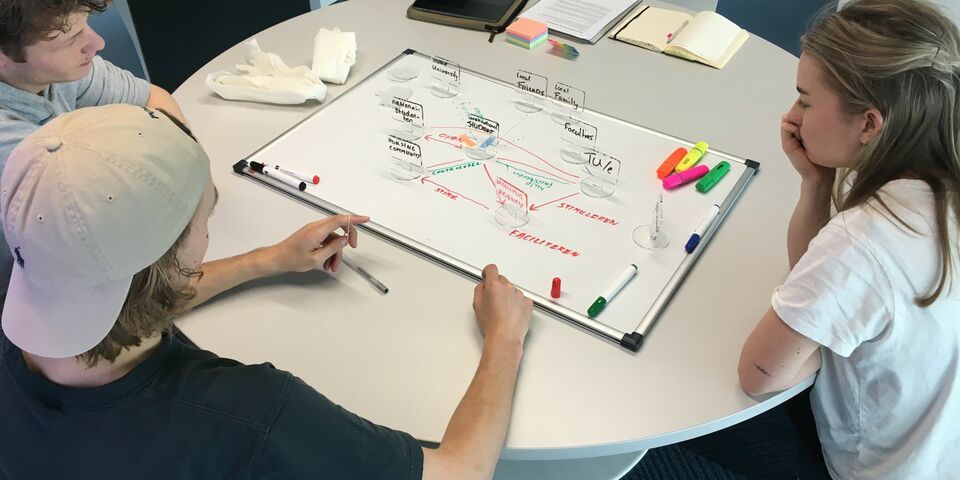‘Recognizing diversity is part of the solution’
Why is it that the Dutch and Asian people on the campus have only sporadic contact? And how could that be improved? And especially: what can the Dutch do to help the situation? After all, little research has been done on how locals can encourage the integration of international students, says Axel van Boxtel, a master's student of Industrial Design. During his graduation research he got his teeth into questions like these and designed a tool to clarify the answers given by his interviewees.
An interest in other cultures, in particular the Asian culture, was nothing new for Axel. So when he needed a thesis topic, one soon came to mind. A literature study helped him to focus his study. “I understood that East Asians are particularly far removed from us in terms of culture,” says Axel. “And I found little information about the role that local students can play in better interaction. This gave me the idea of studying which cultural barriers Asian students encounter that stop them feeling included in the TU/e community.”
Van Boxtel approached nine Chinese and Taiwanese students and eleven Dutch students. He designed a Stakeholder Responsibility Tool (see picture) in order to get as much information as he could from his interviewees. He explains: ”I used this to try to clarify who they thought is responsible for bringing local and international students closer together. And I asked them what role they themselves play in this matter. That got people thinking.”
Interesting and enjoyable
His research was qualitative - so it resulted in no significant data, but it did lead to some insights. “Language is still often a barrier. Many Dutch people still switch to Dutch when another Dutch person joins them, even if they are with an international. And various Dutch students indicated they did not feel the investment was worth making because many internationals are here for only a short time. On the other hand, they indicated that they find their contacts with other cultures interesting and enjoyable. There's plenty of added value to be gained from an experience abroad, they think, but less to be gained from contact with internationals at TU/e.”
From the Asians, Axel understood that events at TU/e are sometimes organized with a Western perspective in mind. “For example, a lot of alcohol is often drunk and this excludes certain cultures from the get-go.”
To Japan
All the students to whom Van Boxtel spoke felt that the initiative to make contact lies mainly with the internationals, and the local students felt that internationals are already doing enough in this respect.
Van Boxtel also learned a thing or two about his own behavior. “At times I've carried on talking Dutch. And I never used to actively seek out Asian students; my contact was mostly by chance, through working with them in project groups.”
In a follow-up study Van Boxtel would like to see how mutual contact can be strengthened. “And I believe that recognizing cultural diversity is a large part of the solution.” He himself is going to Japan soon on an exchange trip and he is eager to use the opportunity to see the situation from the other side of the fence.



Discussion